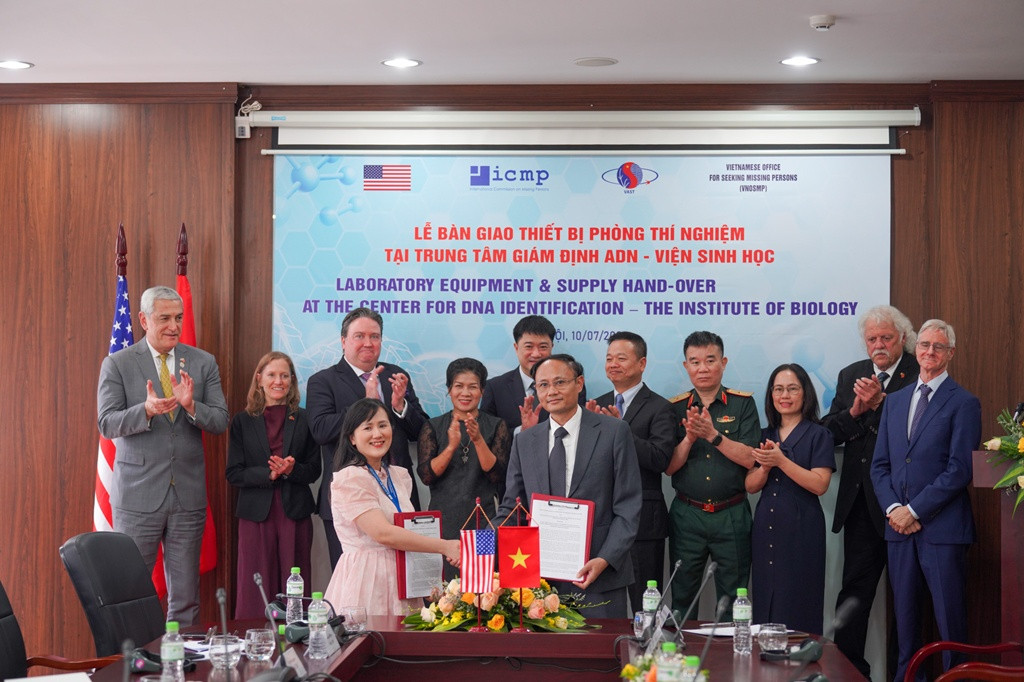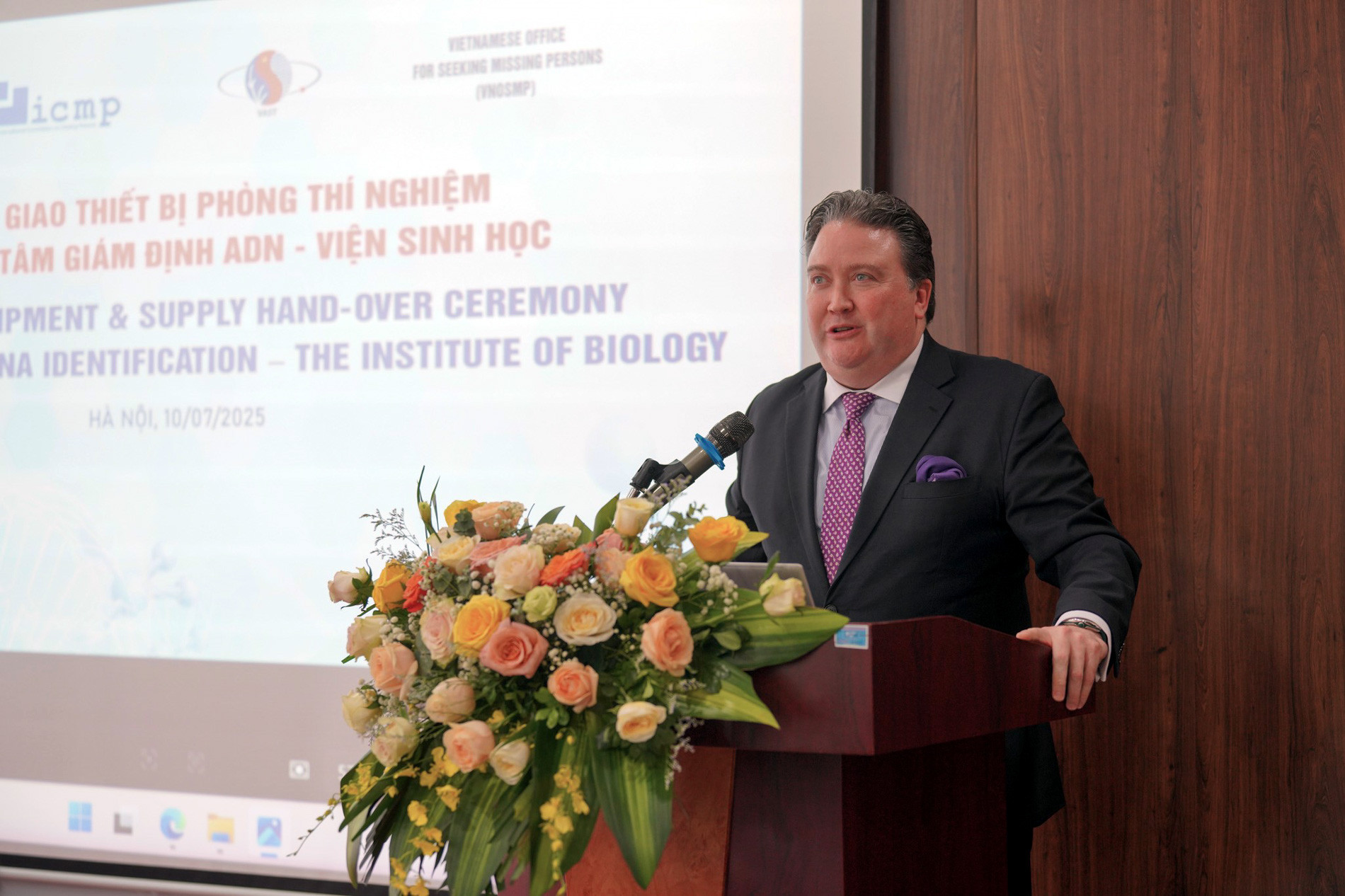On July 10 in Hanoi, the Vietnam Academy of Science and Technology (VAST), in coordination with the U.S. Embassy in Vietnam, held a handover ceremony for equipment, materials, and advanced DNA sequencing procedures to support the identification of unidentified war-era remains in Vietnam.

This event marked a key milestone in the ODA-funded project Enhancing forensic capacity to identify war remains through cooperation, technology transfer, and equipment provision, sponsored by the U.S. Government.
At the ceremony, representatives from the VAST Center for DNA Identification (under the Institute of Biology) and the International Commission on Missing Persons (ICMP) presented updates on the project's progress and results.
The outcomes have been significant: the DNA extraction success rate from heavily degraded remains rose from 22% to 70% - a major technological breakthrough. The use of SNP-based genome sequencing now enables matches with relatives up to four or five generations removed - an unprecedented achievement in Vietnam.
Another breakthrough came from applying gene sequencing methods originally developed to analyze over 100,000 samples of missing American soldiers. These techniques allow researchers to match DNA profiles even from highly degraded bones - far exceeding earlier expectations.
Scientific innovation with humanitarian purpose
Prof. Dr. Chu Hoang Ha, Vice President of VAST, emphasized the broader significance of the project. Funded through U.S. non-refundable ODA and implemented with the support of USAID, the U.S. Embassy in Vietnam, and the ICMP, this initiative represents not just scientific advancement but a humanitarian mission.
For nearly two years, scientists at the Institute of Biology and international ICMP experts have worked to develop and optimize DNA analysis technology suitable for Vietnam’s unique climate conditions, where most war-era remains have been badly degraded after decades in a hot, humid environment.
This marks the first time that SNP-based Next Generation Sequencing (NGS) technology has been proven viable for forensic identification of Vietnam War remains. The success is a testament to the strong scientific collaboration between the two countries under the framework of their Comprehensive Strategic Partnership.
As of July 1, 2025, management of this ODA project has officially transitioned from USAID to the U.S. Department of State, with the U.S. Embassy in Vietnam overseeing its next implementation phases - underscoring Washington’s long-term commitment to humanitarian efforts in Vietnam.
Shared commitment to remembrance and healing

U.S. Ambassador Marc Knapper reaffirmed the importance of the project in deepening bilateral ties: “This initiative represents a major step in normalizing and advancing the comprehensive strategic partnership between the U.S. and Vietnam. It reflects the joint commitment of diplomatic, governmental, and defense agencies on both sides.”
He added that beyond science, the project carries profound humanitarian value - providing long-awaited answers to the families of the missing and honoring those who sacrificed their lives. It also showcases the remarkable progress of scientists in applying modern technology to resolve decades-old tragedies.
Participants in the handover ceremony included leaders from VAST, ICMP, the U.S. Embassy in Vietnam, and the Vietnamese Office for Missing Persons. They exchanged documentation, unveiled the project plaque, and toured the DNA Identification Center at the Institute of Biology.
PV